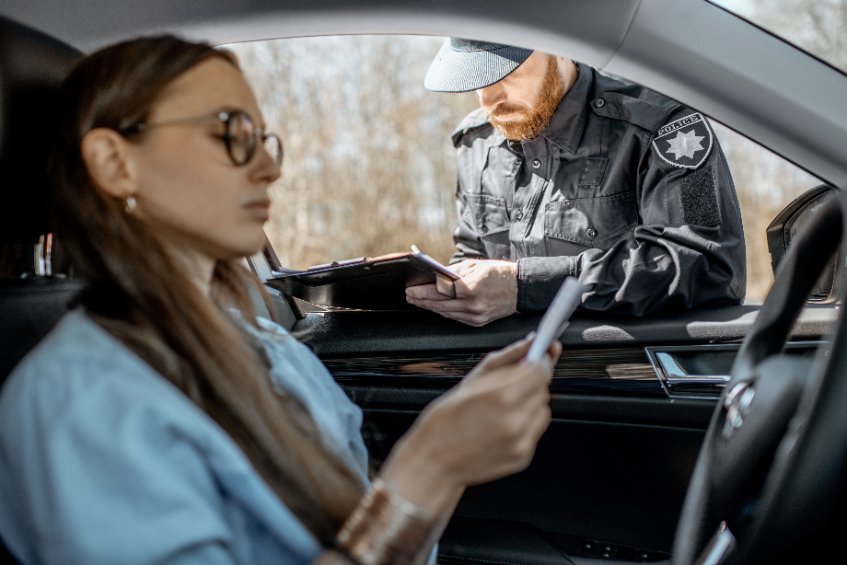

Common Traffic Violations that Lead to Car Accidents
Traffic violations occur when drivers break traffic laws that regulate the operation of vehicles on streets and highways. There is a long list of traffic violations that drivers must avoid to prevent traffic tickets and potential car accidents. When a driver breaks a traffic law such as running a red light, they endanger themselves, other drivers, cyclists, motorcyclists, and pedestrians who are sharing the road with them.
There are many reasons that drivers violate traffic laws and receive traffic tickets. When a car accident happens as a result of one driver violating a traffic law, the responding officer will generally issue a traffic ticket and explain the traffic violation in their collision report. Insurance companies review the collision report and will often assign liability for injuries to the driver who violated the traffic law.
Read More

Car Accidents Biggest Danger on Halloween
More than 40 million American kids go out in the dark to trick-or-treat each Halloween and parents often worry about the “boogey men” dangers such as razor blades hidden in candy or a predator lurking in the bush. In truth, more kids are injured and killed in car accidents on Halloween than from any other danger. According to Safe Kids USA, children are more than twice as likely to be killed by a car while walking on Halloween night than at any other time of the year. Most of these car accidents occur between 4 p.m. and 10 p.m. and in particular during the time the sun is setting when driver visibility is reduced.
Read More

New Vehicle Safety Features Could Help Reduce Car Crashes
Over the years cars have gotten safer as more safety features have been introduced; safety features can help reduce car crashes. Sometimes vehicle manufacturers have taken their own initiative to produce additional safety features and sometimes the federal government has had to step in to legislate safety changes.
Take a look at these five new vehicle safety features that could help reduce car crashes on our roads and highways:
Read More

NHTSA Study: Under-inflated and Worn Tires Increase Risk of Vehicle Accidents
Once your tires are close to failure it can be difficult to prevent vehicle accidents. As we enter fall there will be more rain and other poor weather conditions; tire problems combined with poor weather can dramatically increase the likelihood of a vehicle crash. Proper tire maintenance is an essential component in extending the life of your tires while reducing your risk of an accident.
Read More

Top Causes of Car Accidents in the United States
Car accidents are the number one cause of preventable deaths in the United States. They are responsible for 35,000 fatalities annually and are the number one cause of death for teenagers in America according to the Centers for Disease Control and Prevention. Hundreds of thousands of others suffer personal injuries in the approximately 10 million car accidents that occur each year.
Having knowledge of the leading cause of car accidents may allow drivers to alter their behavior and prevent an accident.
(more…)
Read More

These Driving & Maintenance Mistakes Cause Car Accidents
Car accidents are caused by many reasons including poor driving conditions, distracted driving and worn-out tires. Every driver should work to eliminate risk factors for car accidents.
These top driving & maintenance mistakes are responsible for many car accidents:
Distracted driving
Distracted driving is one of the biggest causes of car accidents; particularly the use of cell phones. Even wireless cell phones create a mental distraction and texting while driving is almost as dangerous as drinking and driving. Avoid distractions by checking your phone before you leave and waiting to check it again until you have pulled over.
Read More

Labor Day Car Accidents
With the lowest gas prices since 2008, many families will take one last road trip before the start of the school year, increasing traffic on the long Labor Day weekend. More cars on the road will mean plenty of Labor Day car accidents.
If you have been injured in a car accident caused by another driver, contact a car accident attorney who can help negotiate the best settlement from the insurance agency.
Read More

How do Poor Weather Conditions Impact Car Accidents?
How do poor weather conditions affect car accidents on roadways? Poor weather can create visibility impairments and affect vehicle performance through lost traction, stability and maneuverability. It may also create road hazards that can delay travel, close roads, and increase the risk of car accidents.
Poor Weather Conditions have an impact on road safety
On average, there are more than 5,760,000 car crashes in the United States every year. About 22 percent of car accidents (about 1,259,000) are considered weather-related.
Read More

Top 5 Car Insurance Scams
Car insurance scams by individual policy holders against their insurance provider have been around since insurance was invented but over the years insurance providers have gotten better at recognizing scams and catching the perpetrators. According to insurance fraud experts, insurance scams are the second highest financial crime in the United States. Additionally, more than 20 percent of personal injury claims and 10 percent of car wreck claims are from bogus or staged accidents.
Most people dread getting into a car accident; dealing with a wrecked car, haggling with your insurance company and personal injuries are no fun. The scary thing is that some car accidents are actually planned in order to pull off a car insurance scam. Innocent drivers end up paying the price both in higher premiums of $200-$300 per year, blemished driving records, personal injuries, and the hassles of repairing or replacing their car.
Top 5 Car Insurance Scams
Read More

How to Reduce Teen Drivers Fatalities?
Car crashes are the number one killer of teens. The younger the teen, the higher the rate of car crashes. Teenage brains are still developing and as a result teens tend to be impulsive and use poor judgment. Poor decisions often include drinking and driving or texting and driving, two of the most risky behaviors when getting behind the wheel.
How Do We Protect Teen Drivers?
Graduated licensing is a highly successful idea and has been implemented in many states: it allows teens to gain driving experience under certain restrictions while they work toward getting their full license. The law is different from state to state but often includes restrictions such as:
- the number of passengers
- the age of passengers
- a minimum number of supervised driving hours with a parent or driving professional
- nighttime driving
- zero alcohol limits
Teen deaths from car accidents have dropped 62 percent since 1975 and graduated licensing is given a lot of the credit as studies have shown a clear link between these programs and lowered crash rates.
The Insurance Institute for Highway Safety (IIHS) website has a calculator that estimates how many lives could be saved if states strengthened their graduated licensing laws. The National Highway Traffic Safety Administration (NHTSA) offers incentives like extra highway safety funds to states that improve their graduated licensing laws.
If your state has poor graduated licensing laws, consider creating your own contract with your teenager. Talk to your teen about the risks of driving while intoxicated or distracted. Help them understand that while they are learning it is best to be alone in the car or with one adult and avoid driving at night.
Technology like Ford’s MyKey is also proving helpful in reducing teen accidents. MyKey allows parents to set the driving rules and store them electronically in the ignition key. Features that can be controlled include the vehicle’s top speed, the volume of the radio, or even whether the radio can be turned on until the driver’s seat belt is secured.
Driver education in the form of advanced driver training can help reduce teen car crashes. When drivers are taught what to do when they are faced with an emergency they are more likely to avoid a car accident. There are many defensive driving courses available through public and private organizations such as the Tire Rack Street Survival School. These courses help teens to improve their driving skills, gain confidence, and learn the limits of their cars.
What to Look for in Car for a Teenager
If you are buying a car for your teen you may be deciding what you can afford versus what is safest. You should be looking for a vehicle that has advanced safety features like electronic stability control and third-generation air bags. Read consumer reports for a vehicle that has performed well in independent crash tests. Avoid a large truck or SUV because their high center of gravity makes them more prone to a roll over. Other disadvantages to a large vehicle include poor handling, poor fuel economy and more passenger seating which is just asking to be filled with distracting teen passengers. Sports cars are too tempting to drive fast. Choose a modest car with the best possible safety features.
If you or a loved one were involved in a car accident, do not hesitate to seek the help of a knowledgeable car accident attorney. The insurance companies are there to pay you the lowest settlement possible; it is not uncommon that a victim who hires an accident lawyer receives up to three times the settlement of someone who fights alone. Please call the caring, experienced accident attorneys at Tario & Associates, P.S. today for a FREE consultation.
Read More